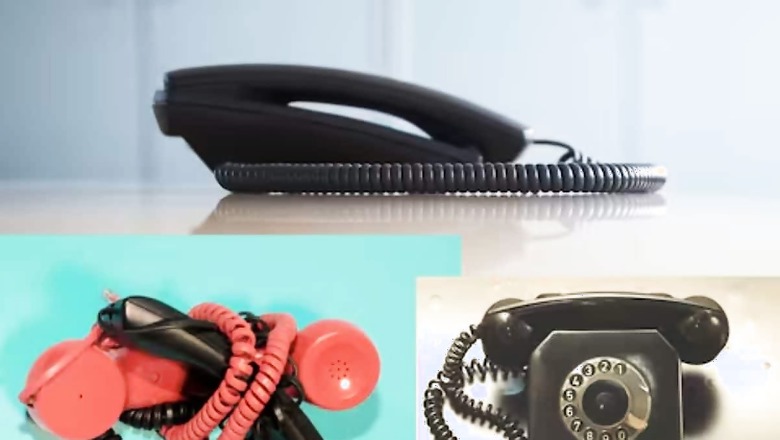
views
We often see various things around us but are not aware of the reasons behind them. One such thing is the spiral wire of the telephone. It has been around since the beginning. There have been many changes in the telephone with time, but this wire has remained spiral. The coil of the telephone equipment, which is the wire between the box and the receiver, has always been spiral. While the box has undergone many changes along with the design, the signal technology has also changed radically, but the coil has not changed. Let’s take a look at the reason behind it.
According to reports, the biggest reason given for these wires being spiral is convenience; these wires can be made longer by pulling them. This can increase the distance between our ears and the phone box, which is quite convenient. The risk of the phone’s wire system getting damaged due to a little pulling also reduces significantly.
The other reason behind keeping the telephone wire spiral in shape is that the telephone receiver is passed from one hand to another repeatedly, due to which the wire gets bent and there is a risk of it getting damaged. So, the wire is already coiled, its rotation does not cause any problems.
Curly cords can be found everywhere, from the cell phone charger to simple key chains from the convenience store. Bud Kinzalow, cable assembly expert and owner of Meridian Cable, had said in an interview: “Curly cords connect two devices where one or both of them need to move relative to the other.”
Curly cords are also known as:
1. Coil Cord
2. Coiled Cable
3. Spiral Cables
4. Coil Cable Retractile
5. Retractable Cable
As per Kinzalow, “When your phone rings, you pick it up off of its base and naturally pull it towards you; curly cords make sure that the cable does not snap back once you run to the end of the line. Curly cords are what allow the cable to grow. When you return the handset to its place, the curly cords retract and take up little space. Otherwise, you would be stuck with a huge pile of cable behind your phone!”




















Comments
0 comment